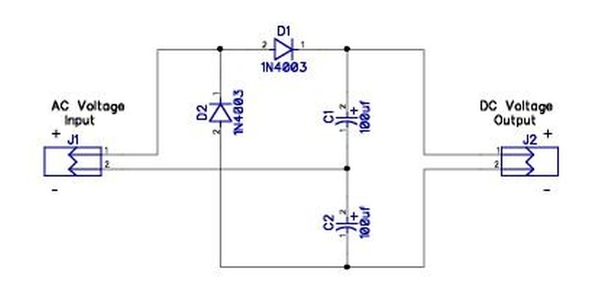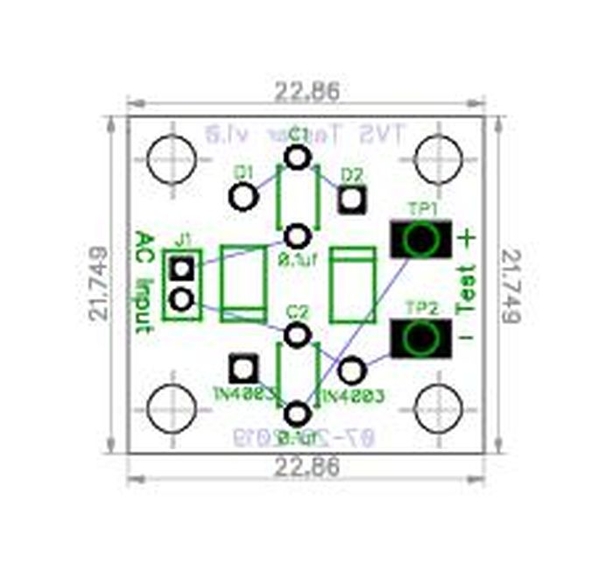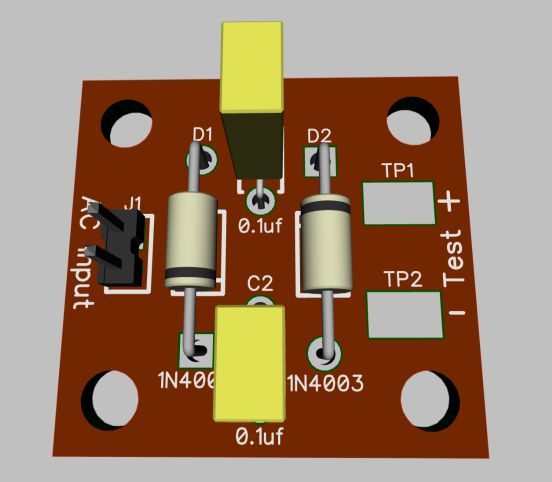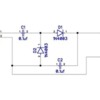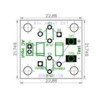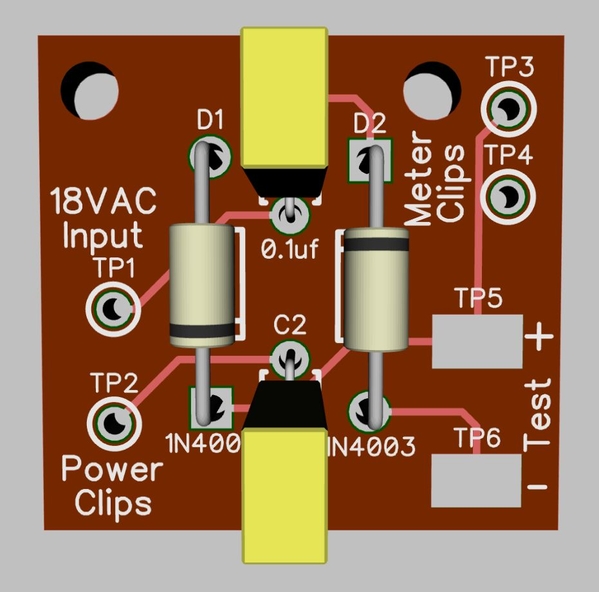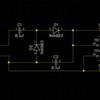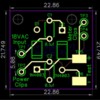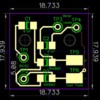I wasn't happy with the big open space in the upper left corner so I put the strain relief hole there. I can arrange things better than Diptrace, but my arrangement skills still need work. Diptrace is worse, but it's really good at routing the traces, that is if you remember to tell it to do that! The strain relief holes are 2.54mm, That is what the TIU Tester holes were as near as I could read the ruler.
I'm still on the SMT case as well! Here is my first attempt at SMT PCBs. You guys have finally put me over the SMT edge.  I am not down to GRJ size yet, but this gets it down to $2.60 for 3 PCBs shipped from OSHPark. It uses the 12 size/number SMT components (gotta start somewhere) so the design can still be refined down some. I am still going to try GRJ's suggestion of putting stuff on the back side too, so that will likely reduce the size some. I am not sure how close I can get to the edges and a few other things like that with spacing. At least this gets rid of the big open space in the upper left corner.
I am not down to GRJ size yet, but this gets it down to $2.60 for 3 PCBs shipped from OSHPark. It uses the 12 size/number SMT components (gotta start somewhere) so the design can still be refined down some. I am still going to try GRJ's suggestion of putting stuff on the back side too, so that will likely reduce the size some. I am not sure how close I can get to the edges and a few other things like that with spacing. At least this gets rid of the big open space in the upper left corner. 
I could have had this done sooner, but I got into a battle with Diptrace over 'pads covering the silk' or something like that. I finally beat Diptrace into submission and won the battle by figuring out how the pad things worked. At least enough to get rid of the errors anyway. I am sure it has brutal revenge planned for me in some other section and is just waiting for me to innocently enter into that area so it can pounce.
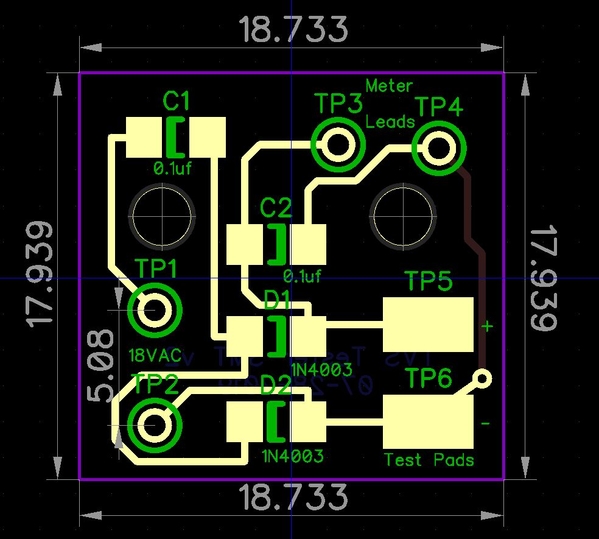
I know very little about the SMT components, other than I can barely see some of them. My reason for starting out with the larger size, not sure that is called 12, but parts started with that number and were large enough to see.  I have a couple of GRJ designed PCBs here for TIU protection and I can only see one of the five parts that are supposed to be soldered to the PCB. He told me they have them even smaller than that!
I have a couple of GRJ designed PCBs here for TIU protection and I can only see one of the five parts that are supposed to be soldered to the PCB. He told me they have them even smaller than that!
Don't despair just yet on the TVS tester interest. Things are picking up rapidly, one person wanting one of them already! I don't plan to sell them, I was just going to share the Diptrace files here for anyone interested. But I would also be willing to offer kits at cost, as I do for the TIU Testers. Maybe even assemble a few for folks that can't (or don't want to) do that part themselves. That would make it easier on some folks, may even promote more interest.
I remember that widget you built, I would love to have one of those too. I remember wanting to make one myself at the time. Not sure now why I didn't. Probably lack of knowledge, too many irons in the fire, etc. That is a really neat little module and adding the tally counter would put it over the top! I'm sure you are much more capable than I am, but I would be happy to try and make a PCB for it in Diptrace, if you ever want one. I would think this item would be of interest to many forum members as well. As you say some very interesting information could be gathered with it by using it as you suggest.
![]()
![]() If I took an old one out because I thought it was bad, it hits the can. I'll have to hook one to my HP supply and do a little test.
If I took an old one out because I thought it was bad, it hits the can. I'll have to hook one to my HP supply and do a little test.![]()




